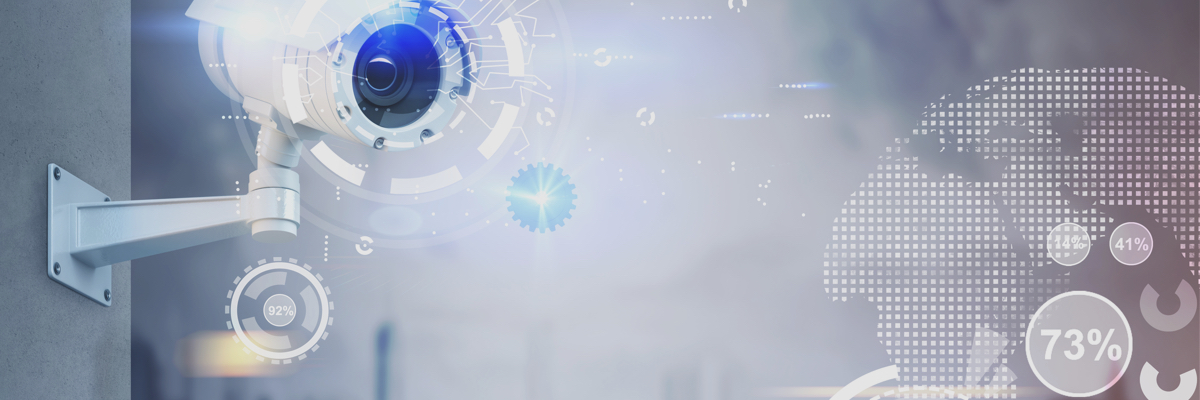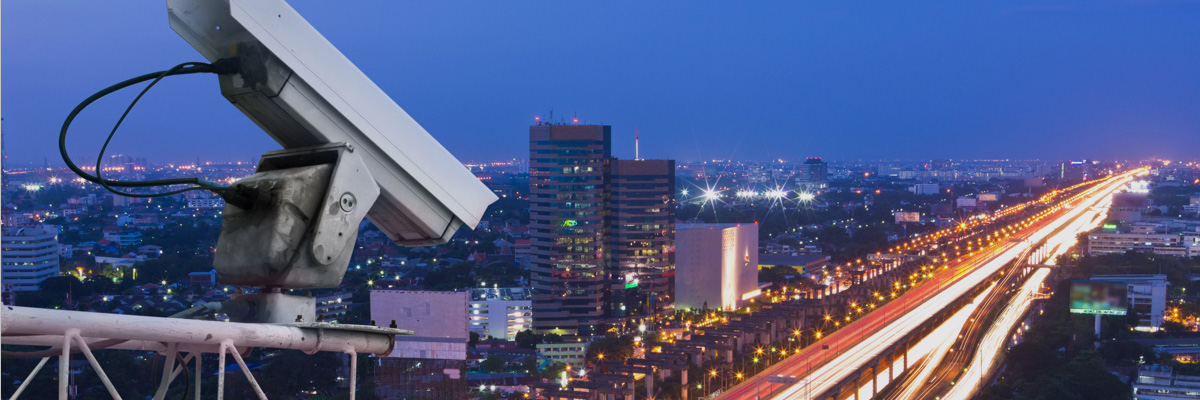Back
- Applications
- Products
- Support
- About HiSilicon
Search
No Result

Technology Simplifies City Management
Smart cities are rapidly developing, but security management within these cities is in urgent need of digitalization and informatization. We use a range of powerful technologies including smart vision, perceptual computing, and AI processing, to optimize the format and processes of city management, and provide the basis for building more complete security and traffic systems, as well as powering efficient transportation.

Building Safer Cities with Smart Vision
In smart cities, technologies such as artificial intelligence (AI) and Internet of Things (IoT) have matured to the point that universal data can now be obtained through intelligent sensing capabilities. AI enables traditional surveillance video content to present structured information, such as license plate numbers, vehicle colors and models, and facial IDs, as opposed to simple code streams. This significantly enhances the value of such video data. Technological progress has streamlined and bolstered public safety and security, and smart devices will continue to lead the way in a wide variety of fields.
Expanded reach for smart vision applications:
Enhanced smart vision capabilities of end devices:
Expanded reach for smart vision applications:
- Downward capability extension: Ubiquitous intelligence offers great convenience and access to a multitude of different services, while providing continual big data inputs into the "brains" of smart cities so that they can continue to improve their operations. For example, when data is collected, transmitted, stored, and displayed in HD mode, AI is utilized to assist with data analysis and decision-making in order to allocate resources and services in an optimal manner. This allows for proactive security alerts, enabling communities to protect the safety of residents in real time, facial recognition and privacy code protections for seamless attendance tracking and office operations, as well as NB-IoT and license plate recognition for convenient travel solutions, including efficient and intelligent parking systems.
- Intelligence and high efficiency: By harnessing ultra-high bandwidth wireless transmission and intelligent IPC and DVR technologies, smart vision can be flexibly deployed to mobile surveillance and law enforcement, shuttles and tour buses, dangerous cargo transportation, as well as temporary locations such as construction sites and performance venues. As this solution depends less on fixed networks and leased optical fibers, O&M costs can be reduced.
Enhanced smart vision capabilities of end devices:
- All-weather 24-hour perception: Continuous imaging, even in low light or harsh conditions, with intelligent detection, extraction, and analysis of objects.
- 8K ultra-HD: With the help of deep learning intelligent algorithms, 8K ultra-HD video offers extreme levels of detail and produces heightened analytical value.
- Intelligent encoding: With the integration of AI and video encoding technology, bit rates are concentrated on key video content for reduced storage and transmission costs.
- Multimodal perception: Images are deeply integrated with other perception data such as infrared and sound data to implement intensive construction of IoT perception devices, further improving the identification accuracy and exploring the value of data.

Keeping Transportation Running Smoothly
Smart vehicles need smarter roads. The intelligentization of vehicles makes it possible for traffic participants to exchange and share information 24/7, regardless of the scenario or weather. Technologies such as artificial intelligence (AI), vehicle-to-everything (V2X), and Internet of Things (IoT) are maturing, and this creates endless possibilities for the construction of smart transportation networks. In smart cities, cameras capture traffic conditions; massive data is transmitted between multiple sources at high speeds; and V2X and automated driving provide new ways to travel. The result is a comprehensive traffic system that coordinates people, vehicles, roads, and environments, maximizing the efficiency of urban transportation.
HiSilicon has more than a decade of technical experience in the field of intelligent transportation. With our leading image collection and processing products, AI edge computing, and V2X, we provide industry-leading intelligent transportation solutions.
- Intelligent perception facilities: Intelligent perception is created with visual perception as the core, and fueled by perception devices such as radars and the compute power of edge AI. It can be used to achieve intelligent recognition and detection, as well as real-time HD snapshots and analysis, which is useful for tasks such as monitoring speeding on highways and managing electronic toll collection (ETC) lanes. These applications can be applied anywhere from urban trunk roads to branch roads, and provide key data for traffic operation and planning.
- Intelligent connected facilities: These facilities are formed by V2X with a wide range of data inputs from intelligent perception devices, and then enhancing them with edge computing capabilities. Vehicle-to-infrastructure (V2I) is a technological framework which enables vehicles to fetch data from smart transportation facilities. V2I requires the digitalization and reconstruction of road infrastructure, including signal lights, radars, cameras, traffic meteorological stations, variable message signs (VMSs), and LED guideboards. By fusing vehicles, roads, networks, and the surrounding environment data into one collaborative system, V2I enables high-speed, low latency communication to be achieved between vehicles and roads. V2X end-to-end low-latency (within 20 ms) direct connection control and HD video backhaul are used to help vehicles obtain dynamic information about surrounding road conditions and traffic participants, so they can avoid traffic accidents. This makes travel safer and more efficient, and also provides a more effective way to manage roads.
- Intelligent guidance facilities: By working in tandem with intelligent perception and intelligent connected facilities, intelligent guidance facilities provide traffic guidance information for drivers and smart vehicles in both visual and V2X modes. This includes signal lights, VMSs, and LED guideboards.
HiSilicon has more than a decade of technical experience in the field of intelligent transportation. With our leading image collection and processing products, AI edge computing, and V2X, we provide industry-leading intelligent transportation solutions.
- Our smart vision chipsets include the IPC SoC and NVR SoC series, which have been widely used to crack down on traffic violations and manage urban roads. These chipsets feature edge AI compute capabilities and industry-leading 24/7 image collection abilities which function in all weathers. They are powered by a CPU+NPU+GPU+IVE+DSP+MCU heterogeneous multi-core processing framework and Linux+LiteOS dual-operating system architecture, and offer powerful AI processing capabilities. They can even run multiple complex tasks concurrently while maintaining an effective high-speed response. With their powerful compute capabilities and diverse interfaces, these chipsets make it possible to extract vital information about factors such as complex crossroads, pedestrians, and non-motorized vehicles, and provide the foundation on which cities can build efficient transportation systems. In addition, our PON+G.hn chip solution grants customers the power to provide transmission capabilities for intelligent perception facilities.
- Our V2X Pre-Module solution was released at the beginning of 2020 to help customers and partners digitalize their roadside infrastructure and boost IoV capabilities. The HiSilicon Pre-Module includes chipsets for baseband processing, RF transceiving, low-noise amplification, and power management. The reference design solution has been verified for commercial use, greatly easing the challenges of module development. With its embedded V2X function, the Pre-Module can be applied to a wide range of scenarios. It can be installed in road auxiliary devices, including road signal lights and electronic signs, and supports the interconnection of road sensors and display units, such as cameras, traffic meteorological stations, roadside radars, signal lights, VMSs, raised pavement markers, and digital triangular cones. Through real-time interaction with vehicles and traffic command centers, multiple types of sensory data can be integrated to establish an information digitalization pipe that provides comprehensive digital road conditions to road users.
Follow US
Contact Us
-
Shanghai
Room 101, 2 Hongqiaogang Road, Qingpu District, Shanghai
+86 755 28780808
support@hisilicon.com
-
Shenzhen
New R&D Center, 49 Wuhe Road, Bantian, Longgang District, Shenzhen
+86 755 28780808
support@hisilicon.com
This site uses cookies. By continuing to browse the site you are agreeing to our use of cookies. Read our privacy policy
